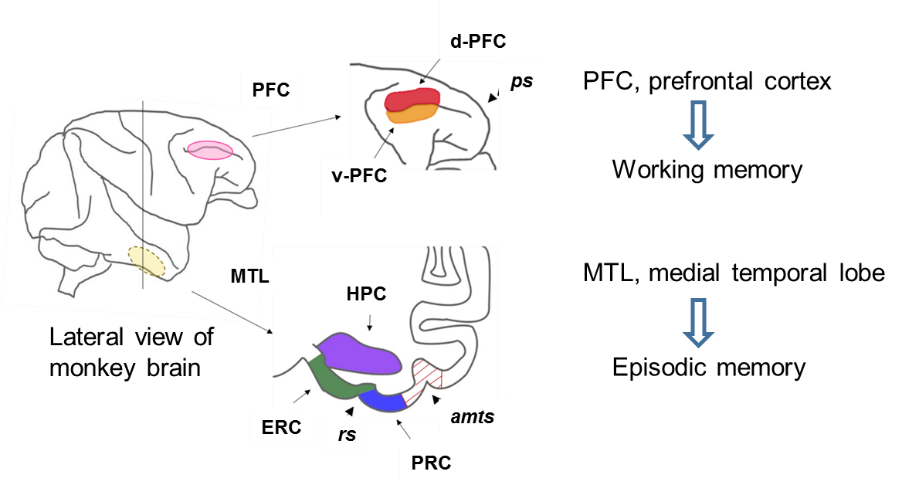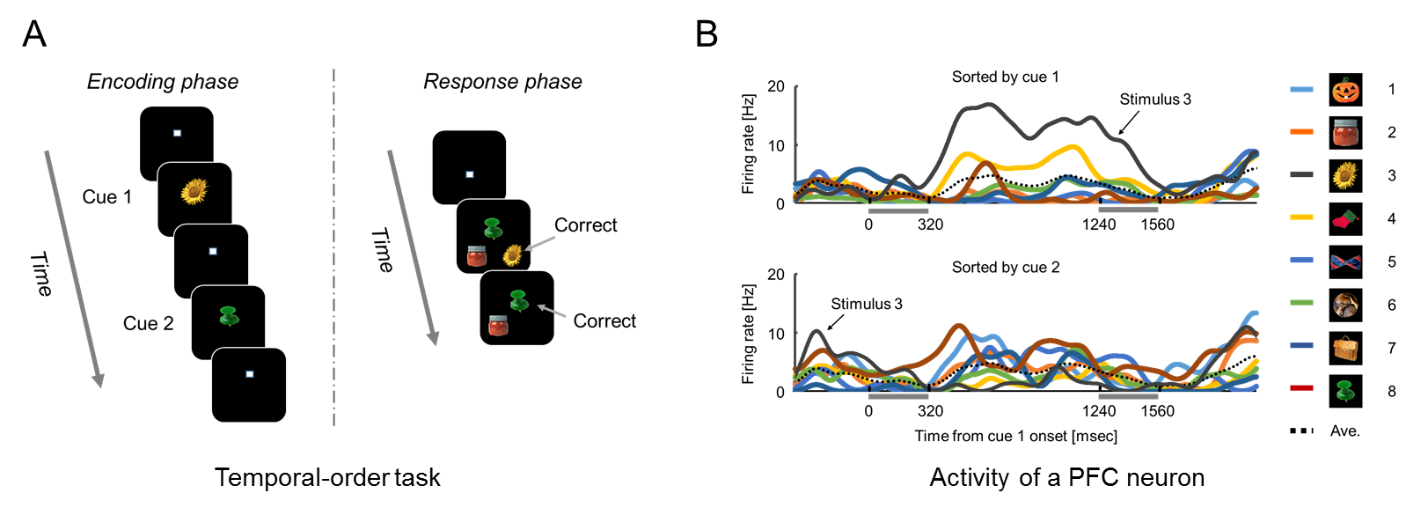Memory for the temporal order of events/items in an episode plays an essential role in planning future actions as well as for episodic memory. Naya’s group compared the patterns of neural activity of cells in the lateral prefrontal cortex (PFC) with cells in the medial temporal lobes (MTL) and visual area TE in non-human primates during the encoding phase of a temporal-order memory task (see Figure). While many cells in both regions signaled information about item identity, temporal-order and the combination of the two, they used largely distinct encoding strategies. PFC signaled specific information about conjunction of item and temporal order and prominent stimulus-selective delay activity that is well suited for planning actions. By contrast MTL areas signaled item-based signals modulated by temporal order as well as prominent incremental timing signals that is well suited for episodic encoding.

Figure 1. Illustration of the target brain areas. The recording sites of PFC included dorsal (d-PFC) and ventral (v-PFC) parts along the principal sulcus (right top). The recording sites of MTL include hippocampus (HPC), entorhinal cortex (ERC) and perirhinal cortex (PRC).

Figure 2. Schematic diagram of the temporal order task and Example of an example of v-PFC item cell showing stimulus-selectivity to cue 1 stimulus.
Yuji Naya*, He Chen, Cen Yang and Wendy A. Suzuki (2017) Contributions of primate prefrontal cortex and medial temporal lobe to temporal-order memory, Proceedings of the National Academy of Sciences of the United States of America. *, corresponding author.
He Chen and Cen Yang are Ph.D. candidates of Center for Life Sciences and Academy for Advanced Interdisciplinary Studies, Peking University.